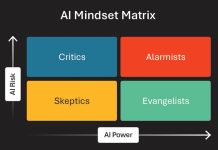After a series of delays to critical upgrades, the world has blue-screened and is now in the process of painfully rebooting. We don’t know how long the process will take, nor which point we are at within it.
Beyond the headlines, sales professionals all over the world are leading with humanity, humility and compassion as they work to lift customers out of turmoil and onto a recovery path, however long it may be. This is occurring with intense internal financial pressures to stop the bleeding.
A Gartner poll in April of chief sales officers (CSOs) across all regions and industry verticals shows that, on average, full-year revenue projections have dropped by an average of 15%. This same survey indicates that, on average, selling expense budgets are getting cut by 18% and, worse, as part of this, 35% of CSOs either have or will execute a reduction of force. The pressure is mounting on sales reps to deliver in the face of impossible conditions ranging from no demand to no supply and less resources to support them.
Ironically, the best sales professionals today are leading the way by avoiding one of the most common, most compassionate questions we hear in the COVID-19 crisis: “How can I help?” Not because they are opportunistic, myopic, selfish and/or conniving, but because of the relative uncertainty in customer ecosystems today. The only certainty in customer’s minds right now is expense management.
If the ultimate open-ended question is the wrong one to ask, what’s the right discussion choreography? How do we actually help customers not just survive this crisis but thrive as we emerge from it?
Lead with insight
The best sales professionals don’t lead with a 40-page chart deck describing their company’s history, product portfolio, features or benefits — especially now. The best sales professionals lead with commercial insight focused on making their customer better. They understand their customer’s business deeply. They understand their ecosystem, their strategy, how they make money, how they beat their competitors, how they grow profitably and, of most importance, their mission and motivation to do it. Ultimately, they don’t lead with their own company at all. The best sales professionals lead to it.
Make sense of the world around us
Most buyers are overwhelmed despite the best of intentions
by thought leaders everywhere, who have hit every production metric associated with pumping out new content. A 2019 Gartner study that revealed this also showed that sellers were 80% more likely to drive decision confidence and low-regret deals by helping their customers make sense of this bombardment.
Develop scenario plans to ensure recovery readiness
One progressive CSO explained how his team is using a hypothesis-led customer engagement framework to have a more productive discussion with customers. The process establishes common beliefs on how the customer’s business would likely be impacted by the current challenges. It also explores likely economic ramifications, and actions that can be taken to address the impacts. This is particularly helpful given that the black swan event that is the COVID-19 pandemic has rendered nearly all predictive models useless. Thus, this hypothesis-led discussion enables a seller to lead with insight, make sense of the information bombarding their customer and support a different type of scenario planning rooted in partnership now, through and beyond the crisis.
The world has hit the reset button and the new definition of world class is the seller who helps. Specifically, the seller who leverages these techniques to help by driving customer confidence and success — in a way uniquely linked to the company that sales professional represents.
Click on any of the articles below to read more from our special report.
How COVID-19 could reshape sales
The right kind of help is not what you think
Firing up the revenue engine post-crisis




